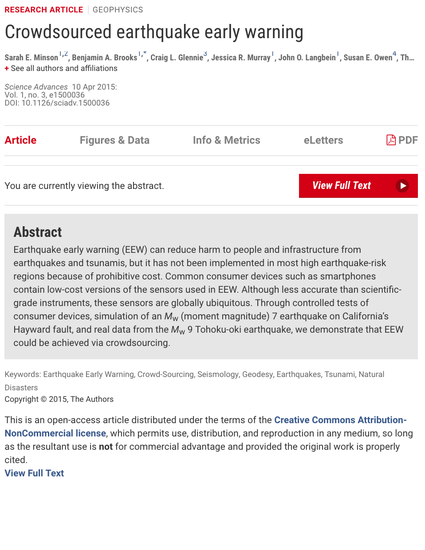
Article
Crowdsourced Earthquake Early Warning
Science Advances
(2015)
Abstract
Earthquake early warning (EEW) can reduce harm to people and infrastructure from earthquakes and tsunamis, but it has not been implemented in most high earthquake-risk regions because of prohibitive cost. Common consumer devices such as smartphones contain low-cost versions of the sensors used in EEW. Although less accurate than scientific-grade instruments, these sensors are globally ubiquitous. Through controlled tests of consumer devices, simulation of an Mw (moment magnitude) 7 earthquake on California’s Hayward fault, and real data from the Mw 9 Tohoku-oki earthquake, we demonstrate that EEW could be achieved via crowdsourcing.
Disciplines
Publication Date
April, 2015
Citation Information
Sarah E Minson, Benjamin A Brooks, Craig L Glennie, Jessica R Murray, et al.. "Crowdsourced Earthquake Early Warning" Science Advances (2015) Available at: http://works.bepress.com/bob/27/
